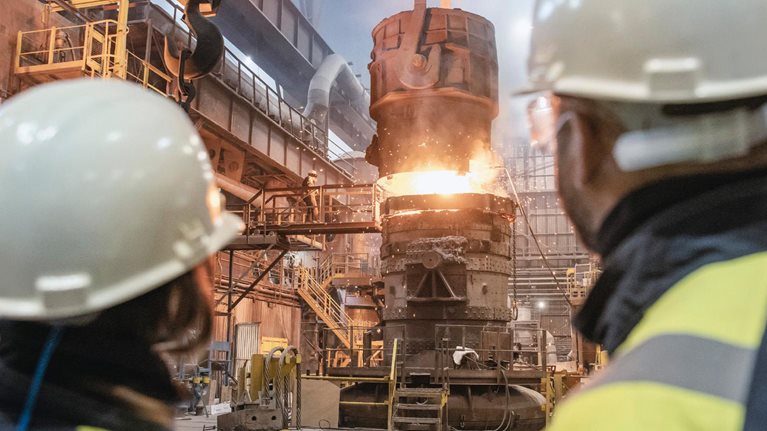In recent years, supply chains have become substantially more challenging to manage. Longer and increasingly interlinked physical flows reflect the rising complexity of product portfolios. Market volatility, which has been exacerbated by the COVID-19 pandemic, has elevated the need for agility and flexibility. And increased attention on the environmental impact of supply chains is triggering regionalization and the optimization of flows. As a result, companies and stakeholders have become more focused on supply-chain resilience.
Supply-chain management solutions based on artificial intelligence (AI) are expected to be potent instruments to help organizations tackle these challenges. An integrated end-to-end approach can address the opportunities and constraints of all business functions, from procurement to sales. AI’s ability to analyze huge volumes of data, understand relationships, provide visibility into operations, and support better decision making makes AI a potential game changer. Getting the most out of these solutions is not simply a matter of technology, however; companies must take organizational steps to capture the full value from AI.
The changing face of supply-chain management
The supply chain is the web linking together multiple functions, including logistics, production, procurement, and marketing and sales (Exhibit 1). Integrated planning enables companies to balance trade-offs across functions and optimize earnings before interest, taxes, depreciation, and amortization (EBITDA) for the organization as a whole.

The experience of one large building-materials company highlights the evolving nature of supply-chain management. The company recently broadened the mission of its supply-chain function along four dimensions: increase operational sustainability; provide premium service levels and implement demand sensing for short-term changes; integrate its manufacturing and logistics supply chains; and make the business more resilient. As part of this effort, the organization expanded its central supply-chain team and created a chief supply-chain officer role who reports directly to the CEO.
Such approaches have stretched supply-chain functions, which must now operate as a “central cross-functional brain” within large corporations. In many organizations, supply-chain management has shifted to concentrate on dynamically optimizing the company’s global value rather than simply improving the performance of local functions. In several process industries (such as chemicals, agriculture, and metals and mining), sales-and-operations planning has evolved into integrated business planning. The recent supply-chain disruptions and demand triggered by the COVID-19 pandemic have further amplified the need for companies to develop their central-planning muscles.
Enhancing the relevance and size of supply-chain or business-plan teams is not enough to achieve better performance. Companies must tackle several additional challenges:
- predicting demand across multiple product segments and geographies
- dynamically identifying trade-offs with hundreds or thousands of interlinked variables and innumerable technical constraints
- integrating AI solutions (such as processing optimization, predictive maintenance, or master data quality) to manage the wider value chain
- ensuring that plans get executed and can adapt to variability effects (such as demand shocks, production stoppages, and transportation disruption) in a timely manner
Would you like to learn more about our Metals & Mining Practice?
A crowded solution landscape
The good news is that AI-based solutions are available and accessible to help companies achieve next-level performance in supply-chain management. Solution features include demand-forecasting models, end-to-end transparency, integrated business planning, dynamic planning optimization, and automation of the physical flow—all of which build on prediction models and correlation analysis to better understand causes and effects in supply chains. Successfully implementing AI-enabled supply-chain management has enabled early adopters to improve logistics costs by 15 percent, inventory levels by 35 percent, and service levels by 65 percent, compared with slower-moving competitors.
Given the significant value at stake, multiple solutions have emerged. Both incumbent IT vendors and market disrupters are entering the game. New offerings include demand planning (which has been revolutionized by integrating machine learning and harnessing new sources of data); real-time inventory management, thanks to the IoT and connectivity; and dynamic margin optimization of end-to-end chains with digital twins. For example, retail and e-commerce are at the forefront of demand prediction.
Selecting the right solution is critical. To manage the complexity of today’s supply chain, new solutions need to be smartly designed and adapted to specific business cases. They also need to fit well with the organization’s strategy. This alignment enables companies to tackle key decision-making points with an adequate level of insight while avoiding unnecessary complexity. However, implementation can require significant time and investments in both technology and people—meaning the stakes are high to get it right.
Embarking on an AI-driven transformation
Transforming a supply chain is an ambitious undertaking, and companies should be fully aware of the challenges (see sidebar “Navigating implementation challenges”). However, the potential benefits are significant: companies that are able to manage four specific areas in tandem will be positioned to achieve far greater visibility and better decision making—all powered by AI (Exhibit 2).

1. Value-creation identification, strategy, and road map
As a first step, companies need to identify and prioritize all pockets of value creation across all functions, from procurement and manufacturing to logistics and, ultimately, commercial. Less than one-third of companies perform an independent diagnostic at the outset, but this exercise can ensure companies have an accurate list of all the value-creation opportunities.
Clearly defining a digital supply-chain strategy helps support the company’s business strategy and ensures better alignment with its digital program. In addition, a solution-agnostic assessment enables companies to identify the process redesign, organizational changes, and capabilities required to boost performance as well as create a strategic road map.
2. Design of target solution and vendor selection
The complexity of supply chains—from demand forecasting to planning optimization and digital-execution tracking—means that finding one provider that can meet all of these needs is increasingly unlikely. Executives should recognize that the right answer for their company won’t necessarily be the one recommended by the providers, whose goal is often to push for a single end-to-end solution.
Solution design and vendor selection can help support the digital supply-chain strategy. Often, the best approach is a combination of different solutions from different providers, implemented by different systems integrators. Companies that select a suite of solutions must make integration a top priority.
3. Implementation and systems integration
Many companies haven’t had sufficient experience in implementing organization-wide technology. Once companies select solutions, the risks are falling behind the implementation schedule and coming in over budget while losing focus on the primary objective: to properly address value-creation levers from the first pitfall. Only 25 percent of supply-chain leaders reported feeling their objectives are aligned with the incentives of their systems integrators.
Companies should take a holistic approach to implementation and systems integration. By optimizing the end-to-end value, companies can implement solutions that deliver value in the short term and are more sustainable over the long term (see sidebar “An end-to-end approach to supply-chain optimization”).
4. Change management, capability building, and full value capture
Even while focusing on tech solutions, companies must attend to vital supporting elements, such as organization, change management, and capability building. Our research suggests this task is a common challenge: for example, only 13 percent of executives report that their organizations are sufficiently prepared to address their skills gaps.
To ensure adoption of new solutions, companies must invest in change management and capability building. Employees will need to embrace new ways of working, and a coordinated effort is required to educate the workforce on why changes are necessary, as are incentives to reinforce the desired behaviors.
Supply-chain management has never been more formidable, but help is on the way. AI will be able to provide teams with deeper insights at a much higher frequency and granularity than ever. However, this visibility alone will not be enough to capture more value from AI-based supply-chain solutions. Any sizable technology investment must be matched by organizational changes, business process updates, and upskilling efforts. Only then will companies capture the expected ROI.


